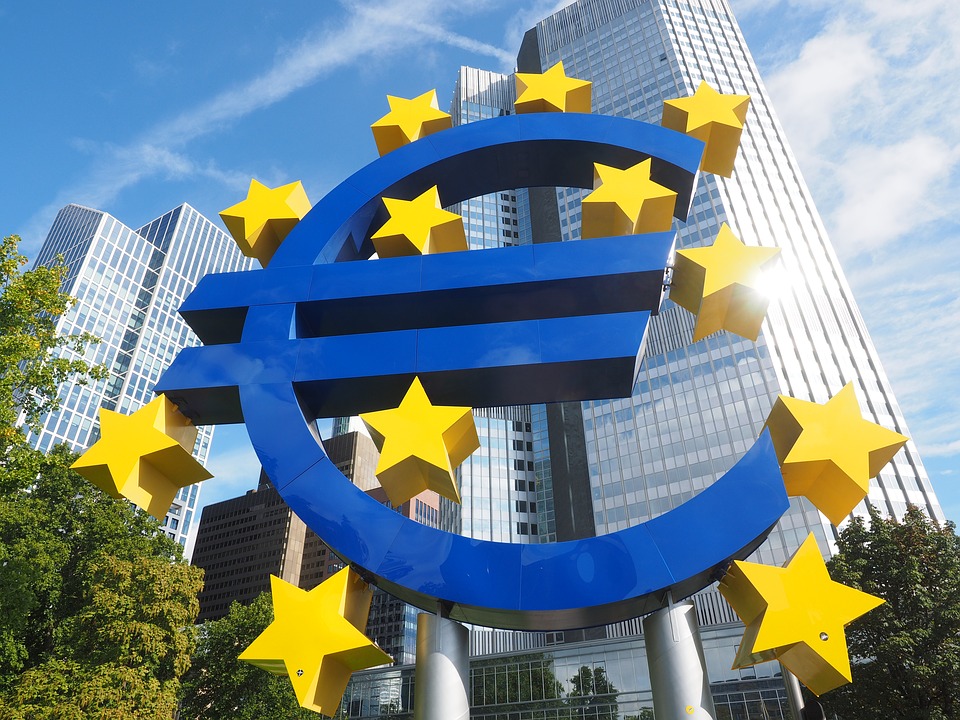Euro zone bond yields edge higher after volatile few days
Bond markets have become more volatile in recent days as a clear divergence has opened up between the U.S. and European economies, while the rise in tensions between Israel and Iran has caused investors to switch in and out of government debt, which is seen as a safe haven during uncertainty. Germany's 10-year bond yield, the benchmark for the euro zone, was up 2 basis points (bps) at 2.453%, within the 2.2% to 2.5% range it has traded in since early February.

Euro zone bond yields inched upwards on Tuesday after rising at the start of the week on the back of strong U.S. data and a fall in demand for safe assets. Bond markets have become more volatile in recent days as a clear divergence has opened up between the U.S. and European economies, while the rise in tensions between Israel and Iran has caused investors to switch in and out of government debt, which is seen as a safe haven during uncertainty.
Germany's 10-year bond yield, the benchmark for the euro zone, was up 2 basis points (bps) at 2.453%, within the 2.2% to 2.5% range it has traded in since early February. Yields move inversely to prices. The yield climbed 7 bps on Monday after March U.S. retail sales data came in stronger than expected, causing investors to further trim their bets on Federal Reserve rate cuts this year, and by extension causing a slight reduction in European Central Bank rate pricing.
Investors also moved back out of bonds on Monday, having snapped up safe assets on Friday during uncertainty about Iran's retaliation for a suspected Israeli strike on its Damascus consulate. "Different market analysts are seriously starting to question if there will be any U.S. rate cuts this year," said Jussi Hiljanen, head of rates strategy at SEB.
Yet he said European yields have been trading in a range because "in the ECB Governing Council, all the members seem to be basically settled on cutting rates in June, so it's now a question of how many times will they cut rates after June". The German 2-year bond yield was unchanged at 2.904%, after climbing 5 bps on Monday.
Yields rose slightly after survey data from the ZEW Institute showed that German business morale
brightened more than expected in April, although they then fell back again. Italy's 10-year bond yield was last up 3 bps at 3.864%. The gap between Germany and Italy's 10-year borrowing costs was unchanged at 140 bps, up from 115 bps in mid-March , its lowest in more than two years.
Stronger-than-expected Chinese economic data
on Tuesday did little to move global bond markets, and was tempered by signs of weakness in the March figures. Investors were keeping a close eye on Israel, where Prime Minister Benjamin Netanyahu has vowed to respond to Iran's weekend missile and drone barrage. Oil prices were slightly lower.
Euro zone yields have risen less than those in the U.S. in recent weeks as investors have bet the Fed will keep interest rates higher for longer than the ECB. Germany's 10-year bond yield has risen around 40 bps this year, while the U.S. 10-year yield has climbed 77 bps.
(This story has not been edited by Devdiscourse staff and is auto-generated from a syndicated feed.)
ALSO READ
WRAPUP 12-US will not take part in any Israeli retaliatory action against Iran
Destroyed more than 80 Iranian ballistic missiles headed towards Israel, says US
U.S. news organizations urge Biden, Trump to commit to debates
Blinken calls Turkey, Egypt, Jordan, Saudi FMs over Iran-Israel tensions
Destroyed more than 80 Iranian UAVs headed towards Israel, says US










